
No, that’s not a little mountain, but a big tree.
What is the world’s largest tree? General Sherman is undoubtedly a strong contender, but consider this.
There is a tree in Colombia’s Caribbean region that some wrongly refer to as ‘The Tree of Guacar,’ which was another massive tree in the same location that looked quite similar to the tree we are showing now.
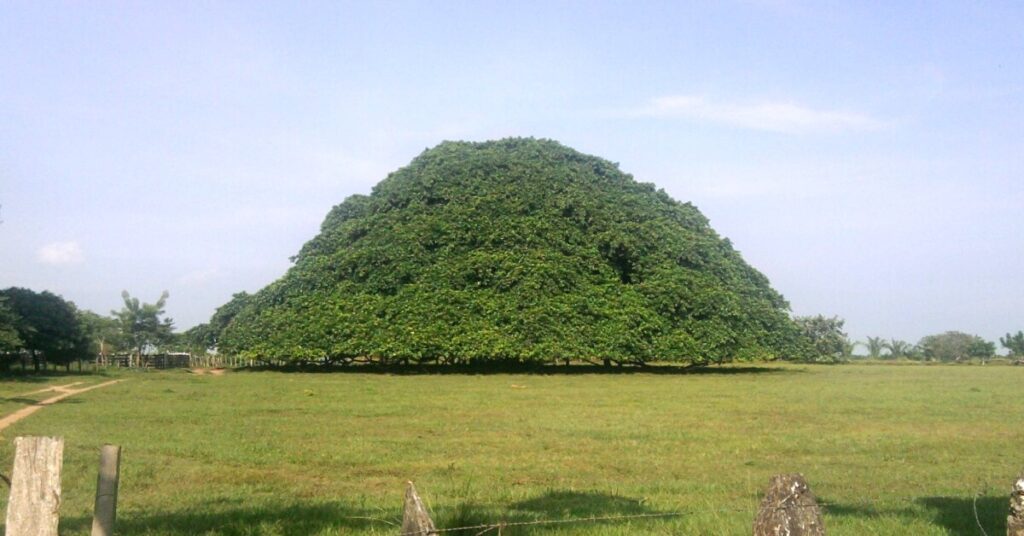
In the 1990s, that tree, also known as the Samán of Guacar, was featured on Colombian 500 peso coins. It was a Samanea saman, often known as a rain tree, that was felled in 1989 when its thick branches began to detach.
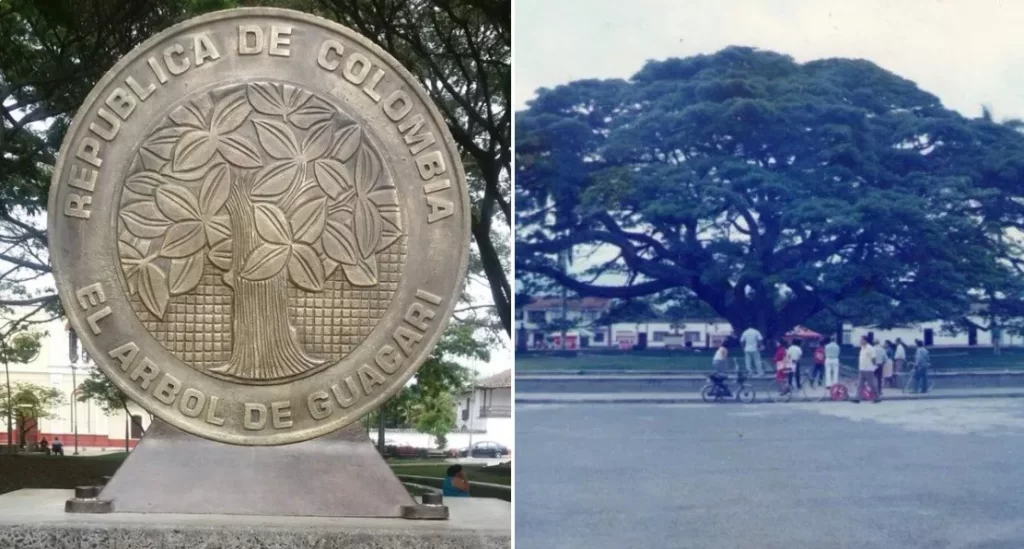
However, the tree discussed in this page is unique. Even though it appears to be another renowned Samanea saman, it isn’t. No, it’s a Ficus, sometimes known as the fig tree, a famous decorative plant that can be seen in gardens and houses all over the world. And it’s become a lot bigger.
The massive fig, known as Columbia’s biggest tree, is so large that it might be mistaken for a hill from afar. Indeed, as you approach it, you begin to feel dwarfed until you are completely dwarfed. That’s understandable, given that this monster is said to be 30 meters tall and 75 meters in circumference (we couldn’t locate definitive confirmation, but the photographs appear to support this).
The tree has stunning foliage that resembles a green mountain, with branches kissing the ground as though paying gratitude to Mother Nature. Not only do they kiss the ground, but they also serve as tree-generated supports, with aerial roots emerging from the branches furthest from the trunk.
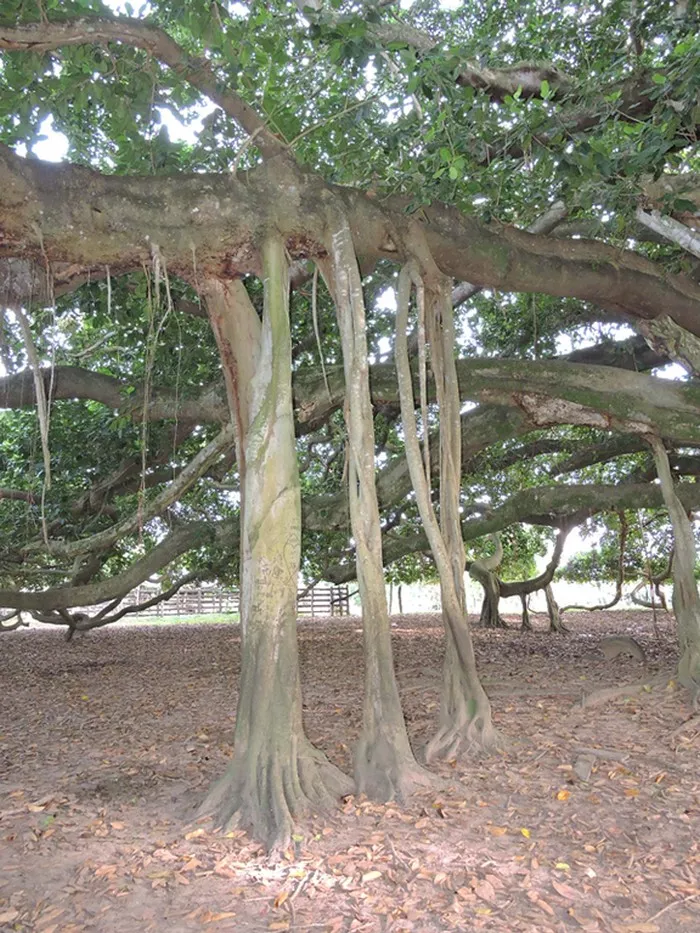
It’s a beautiful sight. According to Viajar en Verano, being beneath this massive tree gives the impression of being in the basement of a large building, with many columns supporting the massive mass. Because of the ‘feet’ with which it assures its growth, it is known as ‘The Tree That Walks’ in Latin America. Indeed, the pillars it has formed are like limbs via which it progresses to cover a broader area with its branches in order to get more direct sunlight or discover more rich ground to feed on.
Even more intriguing, the San Marcos Tree isn’t actually a tree. It’s a grove of trees.
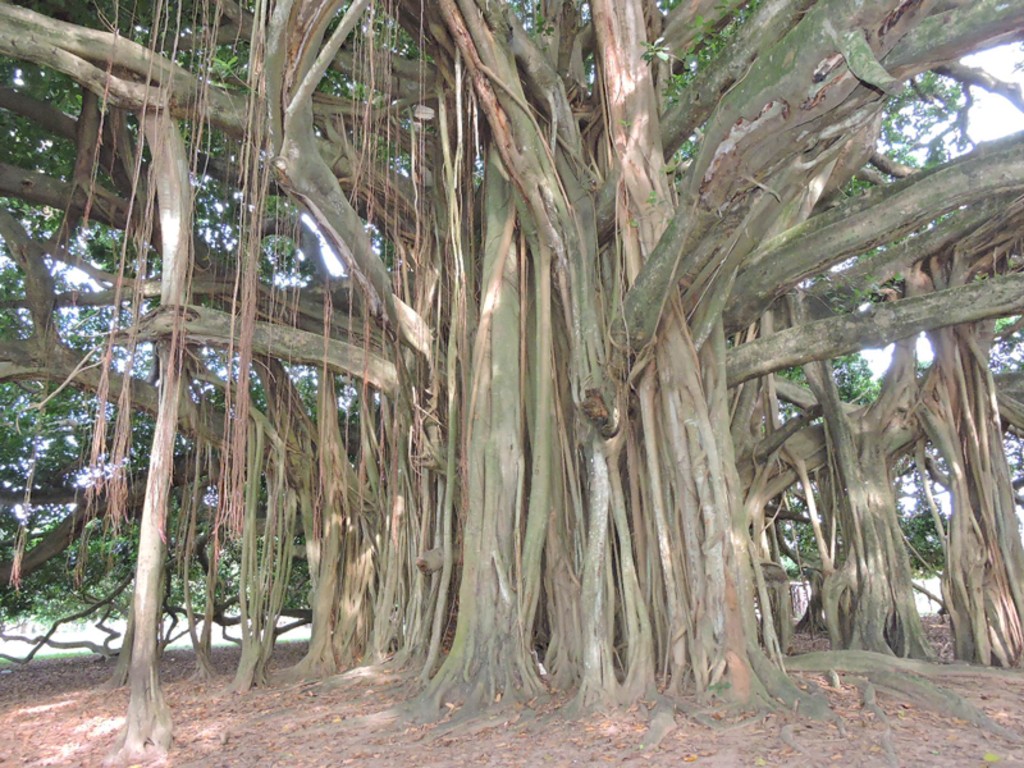
Historian Ral Ospino Rangel describes the formation of the green mass in detail.
It all began when the owner of the Alejandra farm, in 1964, sought to conserve a yellow cedar tree he had planted. To keep the animals from destroying the young cedar, they planted six fig tree rods around it.
However, instead of providing security for the cedar tree, the fig tree struts developed buds and then branches, which finally absorbed and devoured the yellow cedar.
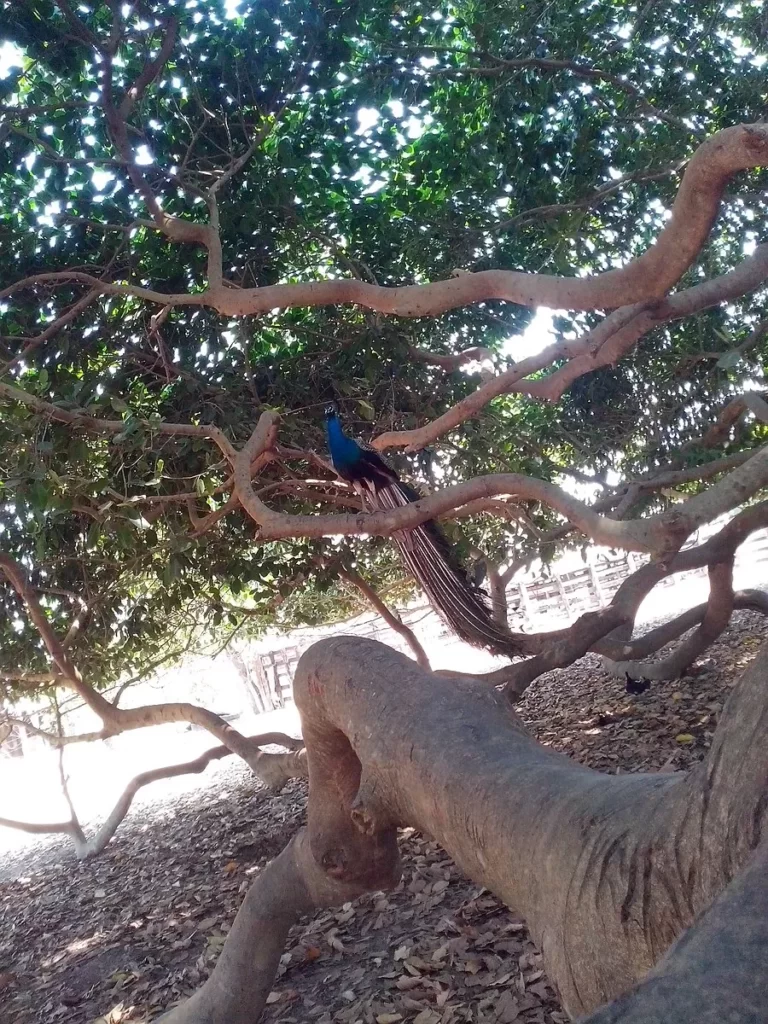
As a result, the ‘Giant Fig of San Marcos’ is made up of six separate plants that were linked and strengthened by aerial roots that served as ground supports.
If you ever find yourself on Colombia’s Atlantic coast, be sure to stop at San Marcos and be enveloped by the shady extremities of ‘The Most Beautiful Tree in Colombia.’ You can see it from afar — the massive ‘green mountain’ may be seen for the first time roughly three kilometers before approaching the Alejandra farm.

One feels little when being protected by the branches of this tree, but yet enhanced by its immense vitality. We can only hope that it will last a long time.
